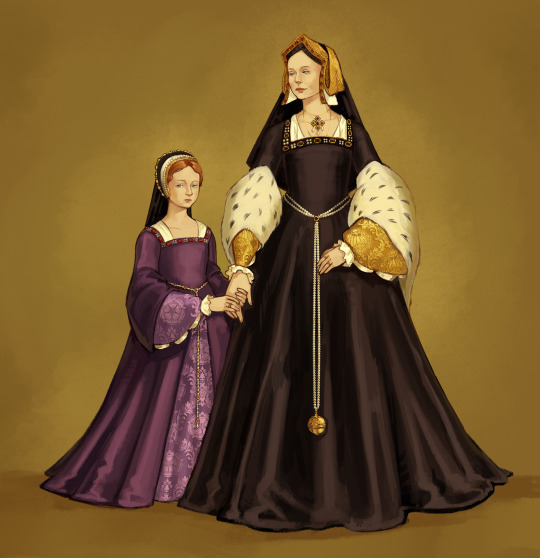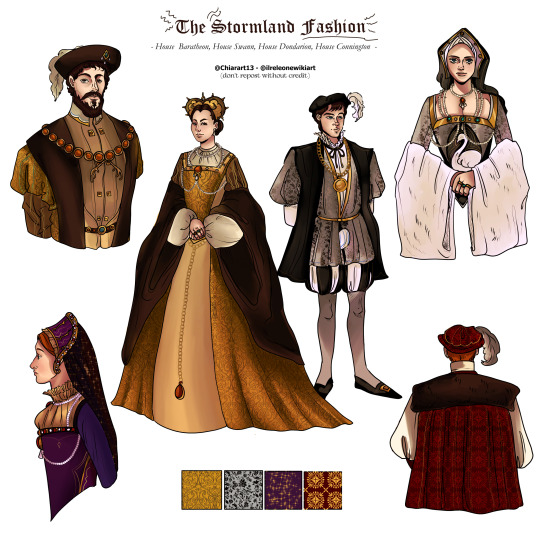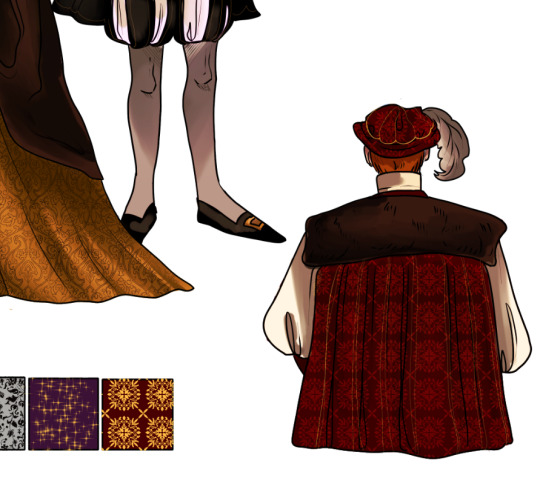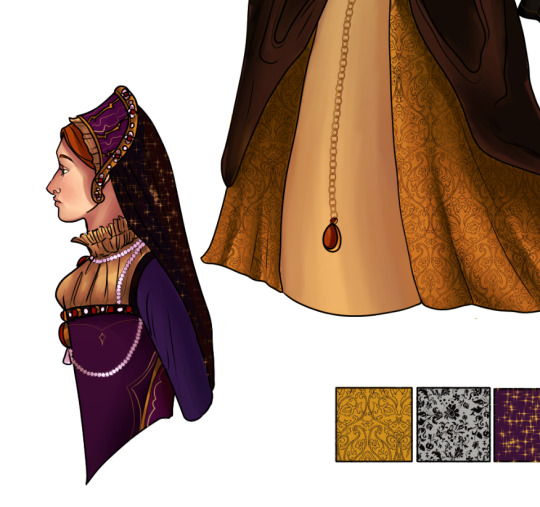#English history
Explore tagged Tumblr posts
Text
The vampire Remmick would be so proud of the IRA and the current day country of Ireland by the way if anyone cares — if him dying for the second time was not necessary to the plot of the movie Sinners 2025, also he had a thing for Bonnie Prince Charlie and had a justified mental breakdown after Culloden assuming he is that old also assuming he was around for it he was definitely a Jacobite cause even though Outlander (all media) neglects to bring it up substantially a lot of Jacobites were Irish cause 800 years of being colonized by England and still fighting them is no joke and cause the most incompetent king in English history was not George III (unless you buy into the American exceptionalism ) but his father George II of Hanover. As a South Asian individual I personally save my vitriol for the officers who profiteered from and co signed the colonialism cause they could not the mentally ill man of early 20 in England who did not want his job in the first place and Queen Victoria cause screw that one in particular (negative connotation). Also, George III at least abolished slavery in England 10 years after [Upper] Canada did in 1820 so there is that.

youtube
youtube
#meera.rambles#meerathehistorian#tunes#media analysis#media criticism#historical fiction#gothic horror#remmick sinners#jack o'connell#vampires#sinners 2025#sinners movie#bonnie prince charlie#jacobites#battle of culloden#history#irish history#scottish history#english history#american history#headcanon#headcanons#bisexual#queer#lgbtq+#outlander#long post tw#long post#SoundCloud#Spotify
27 notes
·
View notes
Text

England’s Pearl and Their Beloved Queen
Mary I and Katherine of Aragon by @francy-sketches
Guys. I have not been so excited for a commission in my life. I know it’s not ASOIAF so definitely not as anticipated among my friends, but it’s just so well done. I adore Katherine and Mary and this turned out so beautifully. I cannot sing Francy’s praises high enough; after the initial reference pictures I sent her, I did not need to correct anything at all, she completely got the vision.
As anyone who has ever encountered me before will have known, I am incredibly particular about commissions and therefore very involved. I usually like to give pieces I pay for extra thought and historical authenticity. For this piece, I went and looked for available quotes and contemporary accounts of Katherine’s fashion choices. I wanted to make sure from the base of the dress (the farthingale underneath) to the jewelry were all as accurate as was reasonably possible. I did even learn a thing or two, despite my initial intention of just checking to make sure everything I had previously believed was true. For example, I learned that Katherine sometimes wore a flemish hood, which I wouldn’t have thought that would align with her fashion sense; I was proven wrong. I have seen practically all the artworks available to the public that have been confirmed to be Katherine, so I had already guessed black was her favorite color to wear. But I did learn that her other favorites were purple and red. I decided to keep it simple with the black. It’s elegant and regal, black was an expensive color but still is not obnoxiously ostentatious. The jewels around her neckline as taken directly from portraits of her. The pearls seem a mainstay for her, but I did learn that her dresses had many other colored jewels tied into them. I just thought black looked the best. Her dresses were fur-lined, although I would definitely say we took some liberties on what the fur looked. The fur she wore was pretty much exclusively ermine. The sleeves also have true gold, which Spanish royalty traditionally loved (for hundreds of years, by this point, at least). Katherine’s Spanish outfits, of which she had many, definitely collected dust in favor of more traditional English outfits. There’s no indication that she was forced into this, as she did sometimes dress in the Spanish style when it struck her fancy, but it was important for her to present herself as English with English loyalties and priorities in mind. That being said, something as innocuous as gold embroidery, which was not completely foreign to the English court, was definitely something she could implement from back home without seeming like a foreigner. I have pomegranate embroidery on her sleeves, which is more of symbolism rather than something accurate. There’s no proof she ever wore pomegranate embroidery on her sleeve, but her official symbol was of a pomegranate, so I figure that was something important to her.
Katherine’s necklace is obviously a direct copy of the necklace she wears in several of the contemporary artworks depicting. This is pure speculation, but I personally believe that this necklace could have come from old English jewels that had been melted down and repurposed for her. Generally, people weren’t as sentimental in the same way we are today, nor worried about these aspects of preservation, so jewels were melted down and used for other purposes all the time. She also usually wore many strings of pearls, but it just would have looked like too much and would take away from the piece overall, so we decided just to do the necklace. Her gabled hood is also directly taken from her contemporary portraits, the gold and black with the red jewels was what she usually wore. She has a girdle belt with a long string of pearls. Sometimes she would wear a cross at the end or some black jewels that matched her necklace. What’s depicted in this is actually a pomander that turns into a rudimentary clock when it is opened. Katherine is recorded as having one of these; I thought that was very cool. I also asked for her to have some rings. She did have a wedding ring, but I found no description of it, so the artist just did basic gold. She’s wearing two which I think is pretty funny considering she was married twice, of course she wouldn’t have worn two wedding rings, but imagine if she did have the audacity to. Katherine had so much jewelry, more than any of Henry VIII’s wives. She had the royal collection available to her, pieces from Spain, and gifts from Henry specifically made for her. She usually decked herself out as expensively as possible.
Unfortunately, there is basically no information on how Mary dressed as a child. We know her mother dressed her and was having the clothes ordered herself, but beyond that, there’s really nothing available that I could find. I felt that Mary would be dressed similarly to her mother, but I wanted to give her a purple dress because purple fabric was generally the most expensive thing you could buy. I wanted to illustrate how loved and well taken care of she was. She has matching rings with her mother, but no girdle belt or necklace because I’m envisioning her as being 6-9 in this, so I wanted to give her something she could play in. She’s wearing a French hood. Katherine ordered her one in 1520, when she was four. My references on how hers should look is from portraits of her aunts Mary and Juana. I felt that Katherine would probably want to buy a style she was familiar with. Mary’s embroidery is of the Tudor rose. It turned out so beautifully. Similarly to Katherine, there’s no evidence that she actually wore that embroidery, but I wanted some symbolism in there.
My intention with this piece was to show the closeness between Katherine and Mary. Katherine loved Mary with all her heart and showed no outward indication of disappointment that Mary was a girl. She spent more time with Mary than any other highborn individual in this time period that I know of. I wanted to show that Katherine is someone that Mary deeply and completely trusted, even when court could be over the top and crowded, frightening for a child. I feel as if people other themselves from people in the past. People often feel as if people 500 years ago did not care as deeply about their children or weren’t attached to them. I believe this is true in some instances, but generally we are more like the people of the past than we like the believe. As far as any research I’ve done has shown, Katherine loved Mary as much as any mother of our time loves her children.
I believe Francy did a beautiful job, so all compliments go to her, I hope everyone checks out her page to see her amazing work. The caliber of this is unlike the commissions I’ve done in the past. I cannot thank her enough.
I hope this ended up being relatively historically accurate, I’m sure someone will let me know if it’s not haha.
#tudor history#the tudors#tudor era#tudor england#mary tudor#house of tudor#katherine of aragon#catherine of aragon#history#european history#english history#mary i#mary i of england#fashion#historical fashion#16th century#1500s#england
559 notes
·
View notes
Text








Wolf Hall + Art (1/2) Queen Jane Seymour Portrait by Hans Holbein the Younger (x) oil on panel, circa 1536/37
#wolf hall#jane seymour#hans holbein the younger#the mirror and the light#wh#periodramaedit#tudorerasource#tudor era#art#english history#kate phillips#tvgifs#mediagifs#dailyflicks#adaptationsdaily#book adaptation#by fefa#tudor england#artwh
1K notes
·
View notes
Text







Westeros fashion studies: Stormlands
"The stormlands, historically the Kingdom of the Storm, are one of the constituent regions of the Seven Kingdoms on the continent of Westeros. The Kingdom of the Storm was a sovereign nation until Aegon's Conquest, in which the last Storm King was slain. The region is so-named for the savage and frequent autumn storms that batter the coast after beginning in the Summer Sea. The stormlands are ruled from the castle of Storm's End by House Baratheon. Notable bannermen of the region include Buckler, Caron, Connington, Dondarrion, Errol, Estermont, Penrose, Selmy, Staedmon, Swann, Tarth, and Wylde. Noble bastards raised in the stormlands are given the surname Storm."
#illustration#artists on tumblr#chiara's art#digital illustration#digital art#fanart#art#pre asoiaf#a song of ice and fire#asoiaf fanfic#asoiaf art#asoiaf fanart#grrm#george rr martin#stormlands#westeros#fashion illustration#fashion studies#studies#tudor style#tudor era#tudor history#english history#house baratheon
278 notes
·
View notes
Text
"This woman, nicknamed ‘Piper’ by the University of Central Lancashire archaeologists who uncovered her in 2014, was buried in grave 116 in a sixth-century early medieval cemetery in Oakington, Cambridge. More interesting than the pipe, which was a pure accident of directional drilling, her grave was richly furnished. She had a brooch on each shoulder, wrist-clasps, and a large ornate cruciform brooch, indicating she had been buried in a peplos dress over a long-sleeved dress and wrapped in a pinned cloak. She also had a collection of glass and amber beads. These items in her grave indicate that she was a wealthy and important woman within her community at Oakington.
The more I researched this dig, which was overseen by archaeologists Dr Faye Simpson and Dr Duncan Sayer, the more the site was revealed to be a remarkable insight into early medieval gender and society. Piper was not the only high-status woman in the Oakington cemetery. In fact, there were a large number of furnished female burials, which acted as focal points throughout the cemetery, and very few male ones.
Duncan Sayer has called the Oakington dig suggestive of a ‘female-dominated matriarchal group’ in early medieval England. What’s more, around thirty percent of the 124 graves were those of infants. The high number of infant burials is disproportionate, indicating that women were in this area specifically to give birth within this matriarchal community.
During the past week there has been much excitement on social media and in the press about the findings of a recent DNA study, which provide evidence for matrilocal societies in Iron Age Dorset. Matrilocal societies are groups in which women stay within family groups, marrying outsiders, while male family members join different groups. Such societies would naturally revolve around generations of women. The Oakington site might provide a comparable example, though centuries later, of a similar kind of female-dominated group."
#history#women in history#women's history#6th century#english history#england#british history#early middle ages#middle ages#medieval women#medieval history
283 notes
·
View notes
Text




I had a moment of enthusiasm and it shows.
Henry V x Catherine of Valois sketches.
#the wars of the roses#hundred years war#henry v#catherine of valois#plantagenets#15th century#medieval#medieval england#british history#english history#art#oc#oc art#illustration#sketch#digital art#artists on tumblr#character design#the white queen#the white princess#henry vi#edward iv#elizabeth woodville#richard iii#house of lancaster#house of york#middle ages#medieval fashion#medievalism
198 notes
·
View notes
Text
"Scholars have offered a number of explanations for why Matilda chose to style herself as domina Anglorum [Lady of the English]. It has been suggested that she might have balked at usage of the term regina, which, translated into the Anglo-Saxon English cwen, implied the wife of a king. The title queen, then, carried with it representational difficulties, as it was the office of king, not queen, that Matilda was seeking. In contrast, the term domina, or hlaefdige in Anglo-Saxon (lady in modern usage), was used to describe a woman exercising political and military power, such as the ninth-century Mercian queen Aethelflaed. As some scholars have suggested, Matilda’s use of the term domina may be related to a wider European usage, as dominus, or lord, described any number of public roles and offices men such as kings performed. Yet another explanation is the convention of kings elected but not yet crowned using the title dominus during the interregnum before their coronation. The title domina Anglorum undoubtedly drew from a number of meanings present in twelfth-century Anglo-Norman society, but all described a woman exercising power. As the Lady of the English, Matilda advertised herself as an individual woman capable of possessing and wielding regal power."
— Charles Beem, "Empress Matilda and Female Lordship", The Lioness Roared: The Problems of Female Rule in English History
#historicwomendaily#empress matilda#the anarchy#12th century#english history#my post#i like Matilda A LOT I can't believe I haven't posted anything about her till date
971 notes
·
View notes
Text










In the early 15th century, Edward of Norwich, the 2nd Duke of York, wrote a list of over 1,000 names that he deemed suitable for hunting dogs. It's included in a book called "The Master of Game," and it's considered the oldest English-language book on hunting. The corresponding dog pictures We Rate Dogs used are just some visual context from the time period, but they have been carefully selected to match a name from the list.
361 notes
·
View notes
Text

The Boleyn sisters, side by side
#anne boleyn#mary boleyn#tudors#tudor history#english history#english costume#six wives of henry viii#henry viii#illustration#watercolor#ink
626 notes
·
View notes
Text
Archaeologists Identify ‘Lost’ Anglo-Saxon Site Depicted in the Bayeux Tapestry
A team of archaeologists has uncovered evidence that a private home in England may stand on the site of a long-lost residence belonging to Harold Godwinson, the last Anglo-Saxon King of England. Their findings suggest that this location, depicted in the Bayeux Tapestry, was a major centre of power before the Norman Conquest.
186 notes
·
View notes
Text
Paid a visit to Clifford's Tower, just a 5 minute walk from our hotel. Like rather a lot of historic buildings in England, it sadly has a tragic and horrific history as the site of one of the worst antisemitic massacres of the Middle Ages, in 1190, in which around 150 Jews (which constituted almost the entire Jewish population of York at that time) took refuge in the tower to escape a mob. Most chose to die by their own hands rather than be killed by the mob and some, who had been promised safe passage if they converted to Christianity, were promptly murdered as soon as they left the building.



304 notes
·
View notes
Text

Another traditional print I did a few months ago, an etching to be precise. This specimen's proud owner is the lovely Sir Rylance himself! Even though he sighed looking at it as if he was mourning an old friend. Definitely makes watching the new season more painful 🥲
#sir mark rylance the angel that you are#thomas cromwell#wolf hall#mark rylance#the mirror and the light#hilary mantel#tudors#tudor era#traditional printing#traditional art#etching#etching print#henry viii#henry tudor#english history#my art#artwork#digital art#artists on tumblr#illustration#drawing#fanart#artist#character art#tudor#tudor history#tudor england
202 notes
·
View notes
Text
When I say "I like Richard III", I'm not saying I condone or absolve the real historical figure. What I love is the Trinity of Richard III the fictionalised villain, Richard III the fictionalised hero and Richard III, the unknowable approximation of a real person that can be scraped together from historical records. Three separate entities often at total odds with one another and yet conceptually one person. It's the multi-faceted, contradictory, vague idea of him that finds a new way back into the Zeitgeist again and again that I love. He's become folklore.
#richard iii#ricardian#and i have no time for people who act like someone's opinion on what happened to the princes is deeply morally telling#it's no good virtue signalling about the issue of nepoticide#culturally that battle has been fought and won#there's no danger of harry killing william's kids and getting away with it if we neglect to be guided by history#history#war of the roses#15th century#english history
192 notes
·
View notes
Text






↳ house woodville & house boleyn + parallels (requested by anonymous)
#house woodville#house boleyn#elizabeth woodville#anne boleyn#english history#parallels#history#historyedit#my gifs#parallels*#creations*#requested*
493 notes
·
View notes
Text
Rare Language Learning: Polari
If you have ever used the words:
- Naff
- Butch
- Camp
You have unknowingly been speaking the sociolect known as Polari, the language of queer people primarily used in the 30s to the 70s. Polari is now an endangered language, as labelled by the University of Cambridge
Something of note: Many resources out there imply (or state) that Polari was a language invented and used solely by white cis gay men, which is decidedly untrue. Many words of Polari come from drag culture, lesbians, and the Romani people and their language. The use of ‘the language of British gay men’ may be a more palatable title to the general public, but it is not to me. I did my best to curate a variety of resources, but unfortunately much of queer history has been lost many more decades than I’ve been alive, if you have any other resources for studying Polari I would love to read them, message me or leave a link in the replies.
Articles
Learn Polari, the Secret Language of the Gays ⚢ Out Magazine
Polari: The code language gay men used to survive ⚢ BBC
Polari and the Hidden History of Gay Seafarers ⚢ National Museums Liverpool
The Story of Polari, Britain’s Secret Gay Language ⚢ Fabulosa!
Polari People ⚢ Fabulosa!
Polari: a language born from prejudice ⚢ Englishpanish
The secretive gay language that gave LGBTQ people a voice ⚢ GAYTIMES
A brief history of Polari: the curious after-life of the dead language for gay men ⚢ The Conversation
Study Material
The Polari Bible ⚢ Internet Archive
Fantabulosa: A Dictionary of Polari and Gay Slang ⚢ Internet Archive
Sociolinguistics / Polari ⚢ StudySmarter
FlashCards ⚢ Quizlet
New Polari Translator ⚢ LingoJam
Polari: A sociohistorical study of the life and decline of a secret language. ⚢ Dissertation, University of Manchester
Polari: a language born from prejudice ⚢ Englishpanish
Simon Bowkett: a short blog in Polari for LGBT+ History Month ⚢ Civil Service LGBT+ Network
#academia#studyblr#university studyblr#uni#university#student#linguistics#language study#language learning#langblr#languages#endangered languages#queer history#queer history month#lgbtq community#lgbtq history#lgbtq history month#lgbt#lgbt history month#queer academia#queer community#linguistic#Polari#Polari language#dialect#sociolect#pride#uk history#English history#university student
793 notes
·
View notes